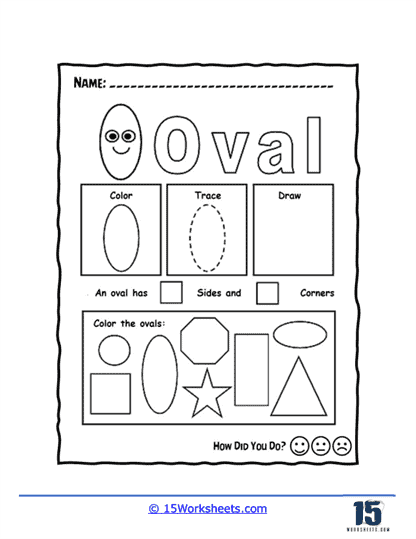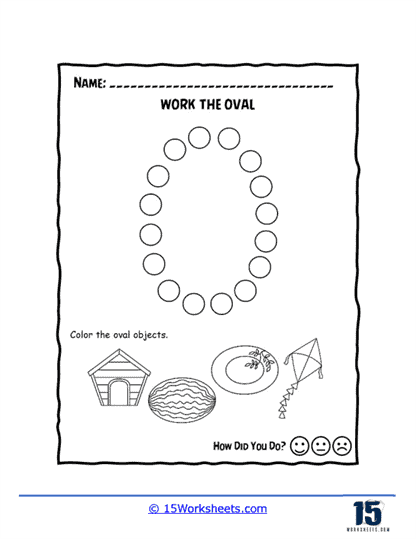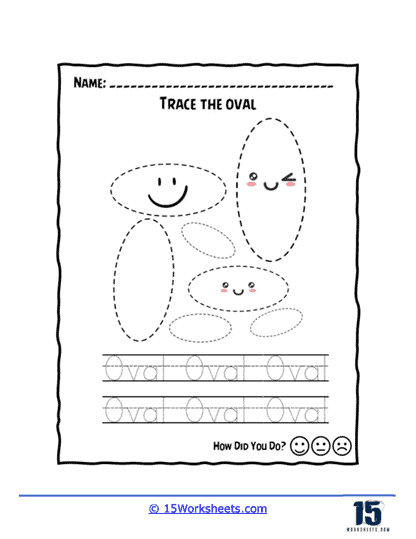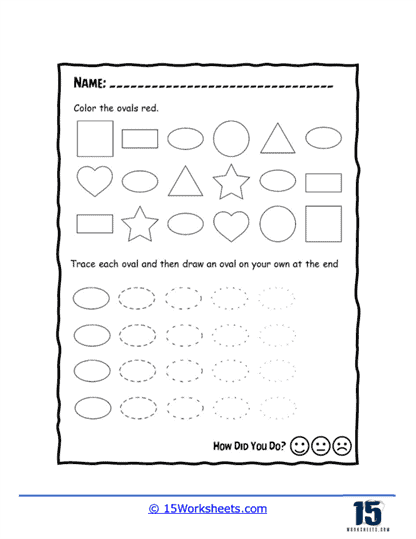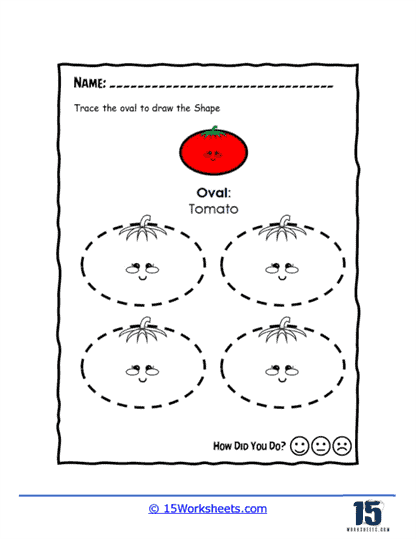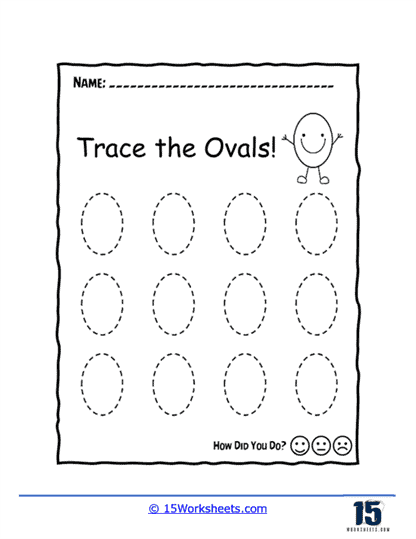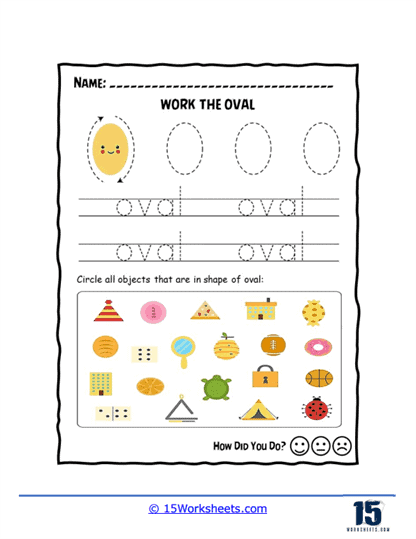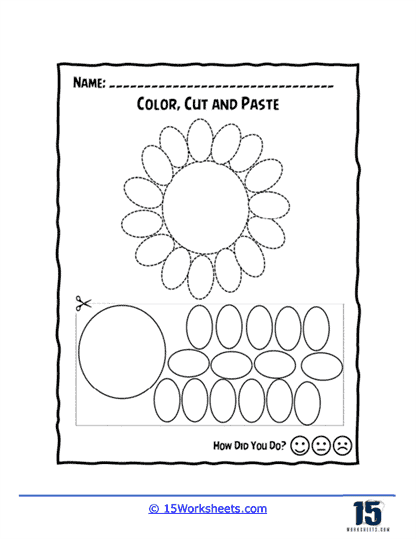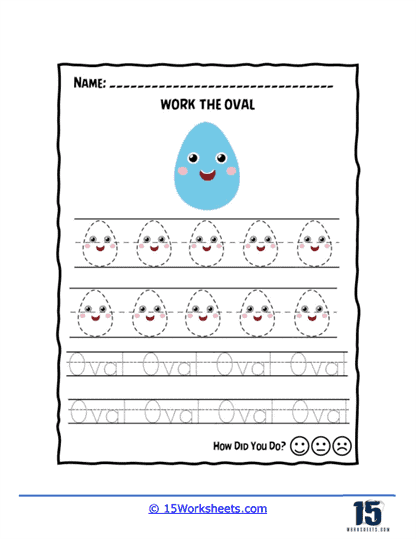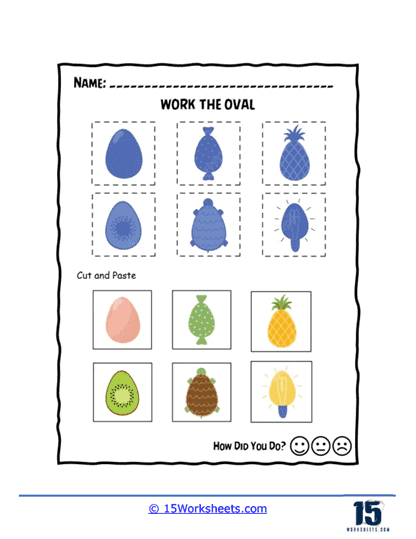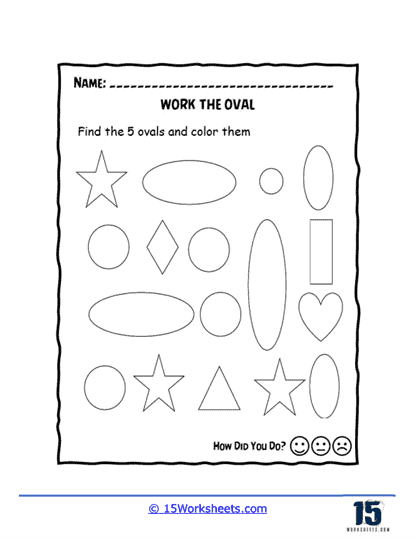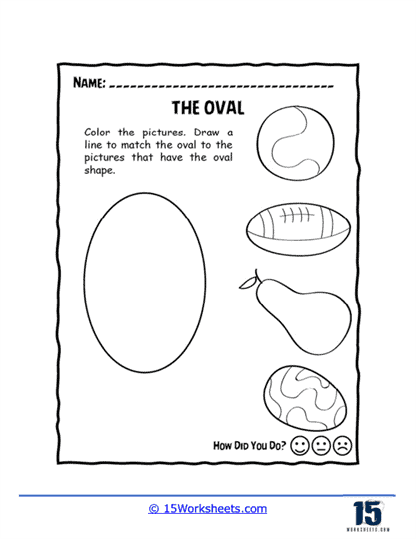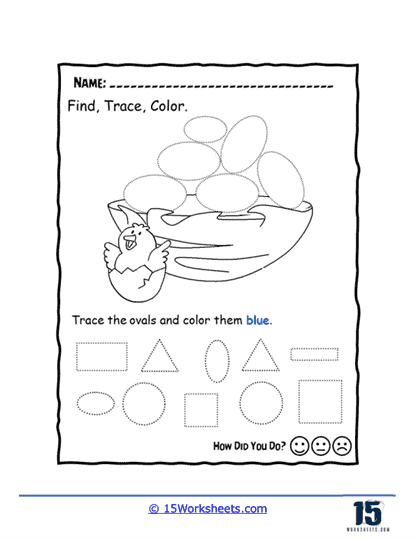Ovals Worksheets
About These 15 Worksheets
Ovals worksheets are educational resources designed to help students learn about and practice working with the oval shape. These worksheets can be used in the classroom or at home to reinforce understanding of the oval shape, its properties, and its appearance in various contexts. Ovals worksheets may include a variety of activities, such as:
Tracing and drawing – These exercises help students develop fine motor skills and become familiar with the shape of an oval. They might be asked to trace over dotted ovals or to draw ovals of different sizes.
Identifying ovals – Students might be given a sheet with various shapes and asked to circle or color in the ovals. This helps them practice recognizing ovals among other shapes.
Coloring and decorating ovals – Younger students might be given a sheet with several ovals to color or decorate, encouraging creativity while reinforcing the shape.
Counting ovals – Worksheets might include pictures with multiple ovals and ask students to count the total number of ovals in the image.
Matching ovals – Students may be asked to match ovals based on size, orientation, or other properties, helping them understand similarities and differences among ovals.
Geometry and measurement – For older students, worksheets could involve calculating the area or perimeter of ovals, understanding the relationship between the major and minor axes, or comparing ovals to other shapes like circles or ellipses.
These are just a few examples of the types of activities that might be included in ovals worksheets. Teachers and parents can create their own worksheets or find pre-made ones online to suit their students’ needs and learning levels.
Explaining This Shape To Children
An oval is a shape that looks like a stretched-out circle. Imagine a circle, but instead of being perfectly round, it’s a bit longer or wider in one direction. It’s like a squished or elongated circle. If you try to draw a circle but gently press on the sides to make it longer or wider, you’ll get an oval shape.
To further help a child understand, you can use visual aids or props:
Show pictures or Illustrations – Display images of ovals or objects that have oval shapes, such as eggs, footballs, or faces. Point out the elongated nature of the shape compared to a circle.
Encourage Hands-on Activities – Provide the child with materials to create their own ovals. They can use playdough, clay, or drawing tools to mold or draw ovals. Guide them to make the shape longer or wider than a circle.
Compare with Familiar Objects – Look around the environment for objects that resemble ovals, such as plates, mirrors, or picture frames. By pointing out these objects and discussing their oval shape, the child can start recognizing the characteristics of an oval.
Trace and Practice Drawing – Give the child a tracing paper or a printable template of an oval. They can trace the shape several times to get a feel for it. Encourage them to practice drawing ovals freehand, emphasizing the elongated nature.

